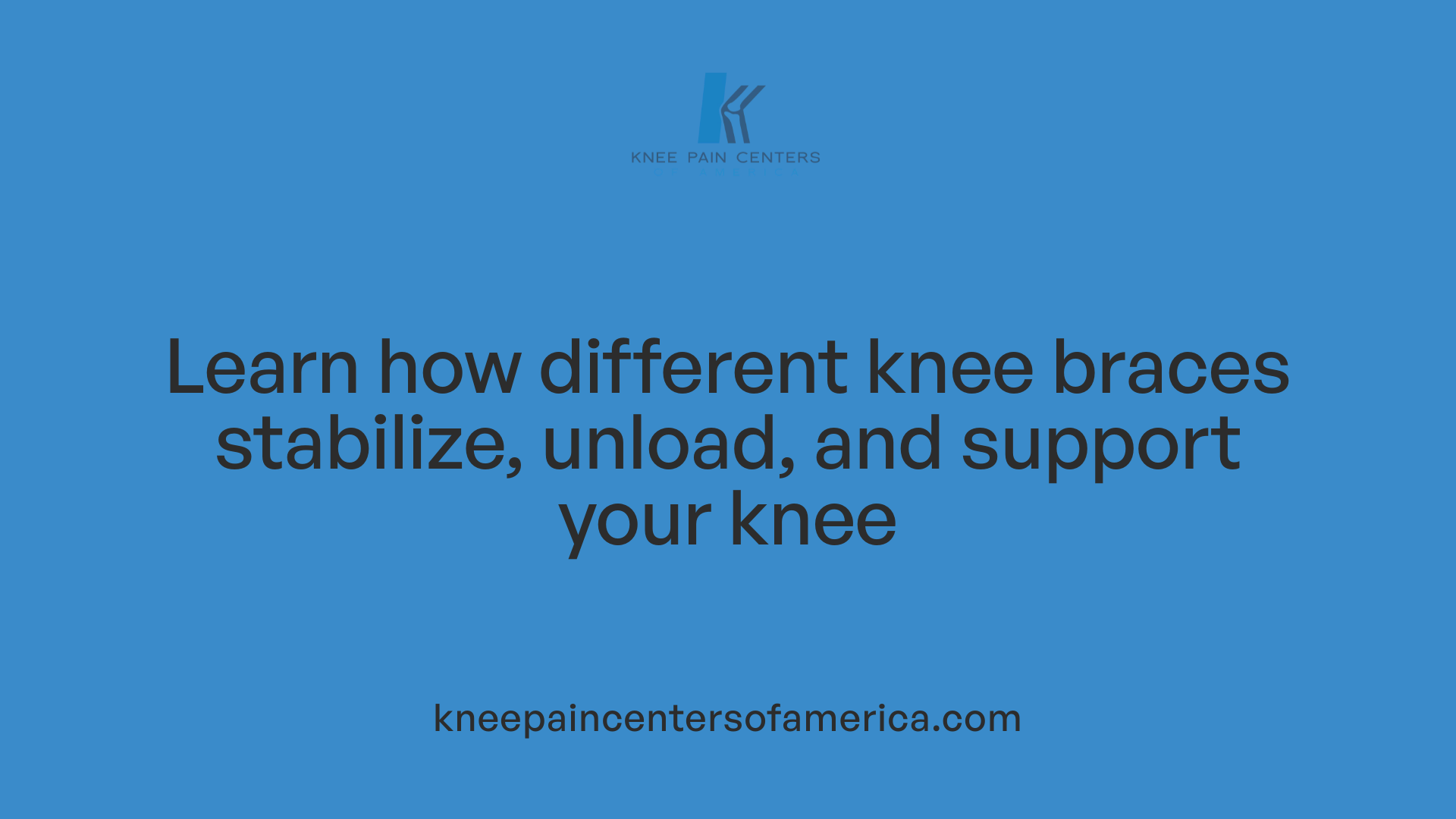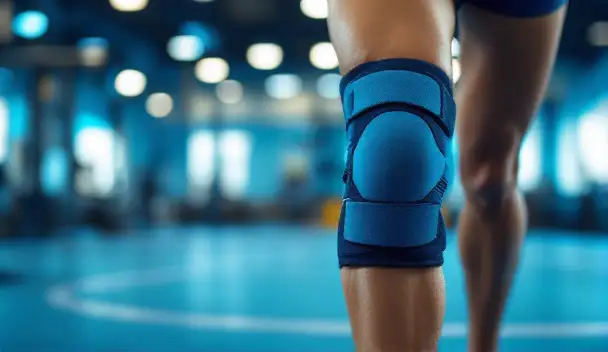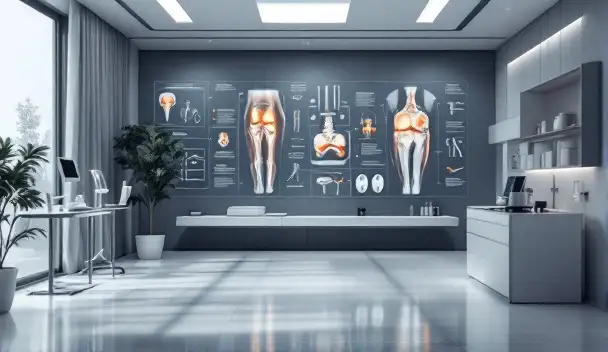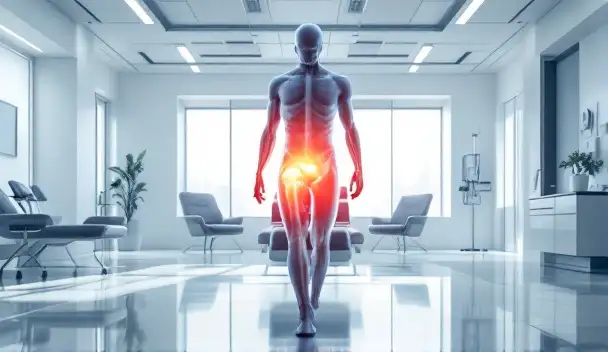Understanding the Role of Knee Braces in Pain Management
Knee pain caused by osteoarthritis and other conditions can significantly impair daily movement and quality of life. While surgical options exist, many patients seek effective non-invasive treatments to manage symptoms and maintain activity. Knee braces represent a cornerstone of conservative care, offering support, stabilization, and pain relief. This article explores the benefits of different types of knee braces, their role alongside other treatments, and how they contribute to a comprehensive pain management strategy.
How Knee Braces Support Pain Relief and Improve Function

How Do Knee Braces Work to Relieve Pain and Support the Joint?
Knee braces help alleviate pain primarily by stabilizing the joint, improving alignment, and reducing stress on affected areas. They achieve this by holding the knee in place, limiting excessive movement, and absorbing some of the body weight that would otherwise press on the damaged cartilage. This unloading effect particularly benefits those with osteoarthritis affecting one side of the knee, as the brace can shift pressure away from the damaged region.
What Types of Knee Braces Are Available and What Do They Do?
There are several types of knee braces, each designed for specific conditions and benefits:
- Unloader Braces: Rigid braces that redistribute weight away from the arthritic portion of the knee to reduce pain and swelling. Ideal for severe medial (inner side) osteoarthritis.
- Patella Tracking Braces: Combine sleeve and support features to stabilize the kneecap and manage pain caused by misalignment during activities like squatting or climbing stairs.
- Hinged Braces: Provide enhanced stability with side hinges, beneficial for ligament injuries and post-surgical recovery, allowing controlled movement.
- Compression Sleeves: Made of neoprene or similar materials, these provide compression, warmth, and swelling reduction, easing mild pain and stiffness.
Choosing the correct brace depends on diagnosis and body type, with professional fitting to prevent irritation or complications.
How Do Knee Braces Reduce Joint Stress and Improve Alignment?
Knee braces support the joint by realigning the knee to offload pressure from deteriorated cartilage areas, which helps slow joint degeneration. By providing compression, they reduce inflammation and swelling, enhancing blood circulation and joint mobility. This improved support decreases stiffness and allows individuals to remain active with less pain, which is crucial in managing osteoarthritis.
How Do Non-Surgical Therapies Like Knee Braces Complement Osteoarthritis Management?
Non-surgical therapies, including knee braces, physical therapy, weight management, and low-impact exercise, work together to manage knee osteoarthritis pain effectively. Physical therapy strengthens muscles supporting the knee, enhancing stability. Weight loss reduces the mechanical load on the joint. Knee braces redistribute forces to minimize pain during movement. Together, these measures help delay or avoid the need for surgery.
| Brace Type | Primary Function | Benefits |
|---|---|---|
| Unloader Braces | Offload pressure from damaged knee regions | Reduce pain and swelling, aid severe arthritis management |
| Patella Tracking | Stabilize kneecap and correct misalignment | Improve kneecap tracking, relieve pain during activity |
| Hinged Braces | Provide lateral stability | Support ligaments, aid post-injury recovery |
| Compression Sleeves | Provide warmth and compression | Reduce swelling, provide mild pain relief |
Types of Knee Braces: Choosing the Right Support for Your Knee

What are the main types of knee braces?
Knee braces come in several types, each designed to support and protect the knee in different ways. The most common types include:
- Sleeve braces: Made of stretchy fabrics like neoprene, these provide compression, warmth, and mild support. They help reduce swelling and improve proprioception (joint awareness).
- Unloader braces: These are rigid braces designed to shift weight away from damaged parts of the knee, especially useful for severe osteoarthritis affecting one side of the joint.
- Patella tracking braces: These combine features of sleeves and unloader braces to stabilize the kneecap and help distribute pressure evenly, especially helpful for kneecap misalignment.
How do these braces function differently?
- Compression: Sleeves offer compression that supports the knee and surrounding soft tissues, reducing inflammation and swelling.
- Stabilization: Hinged braces and patella tracking braces stabilize the joint, protecting ligaments and improving knee alignment.
- Unloading: Unloader braces specifically divert pressure from the arthritic or injured side of the knee to reduce pain and slow degeneration.
What should be considered when choosing between custom and off-the-shelf braces?
Braces can be off-the-shelf or custom-made. Custom braces are tailored to an individual’s knee shape and condition, often providing better fit and comfort, which can reduce risks like skin irritation, pressure sores, and nerve compression. Off-the-shelf braces are more affordable and readily available but may not fit perfectly, potentially causing swelling or discomfort if improperly sized.
For optimal results, selection and fitting should be guided by healthcare professionals such as orthopedic specialists or orthotists. Correct brace choice and fit not only enhance pain relief and stability but also encourage adherence and activity levels, which are crucial to managing knee conditions effectively.
Clinical Benefits of Unloader Braces in Osteoarthritis Management

How Do Unloader Braces Work and How Effective Are They for Medial Knee Arthritis?
Unloader knee braces are specially designed to redistribute weight away from the damaged or painful areas of the knee, particularly in cases of medial (inner) knee osteoarthritis. By shifting pressure from the affected side, these rigid braces alleviate joint stress, reduce inflammation, and help manage pain effectively. Their design includes a long frame and firm structure that provides targeted unloading, making them well-suited for patients with severe or localized osteoarthritis.
How Do Unloader Braces Help Reduce Pain and Correct Knee Alignment?
Unloader braces contribute to pain relief by stabilizing the joint and improving alignment. Their mechanism involves slight repositioning of the knee to decrease pressure on the deteriorated cartilage, which reduces stiffness and discomfort during activities such as walking or hiking. This correction promotes better joint mechanics and can enhance mobility. Additionally, by providing compression and support, they help decrease swelling and improve proprioception.
Can Unloader Braces Slow Joint Degeneration?
By minimizing uneven load distribution and excessive movement, unloader braces help protect the knee joint from further wear and tear. Their stabilizing effect supports proper alignment and reduces mechanical stress, potentially slowing the progression of cartilage damage. While not a cure, these braces serve as a conservative management tool alongside physical therapy and lifestyle modifications to delay the need for surgical interventions.
Overall, unloader knee braces offer a clinically valuable, non-invasive approach to managing medial knee osteoarthritis by reducing pain, optimizing alignment, and contributing to joint preservation.
Integrating Knee Braces Within Broader Osteoarthritis Treatments

How do knee braces complement other osteoarthritis treatments?
Knee braces play an important role alongside established treatments for knee osteoarthritis such as physical therapy, medications, and injections. Physical therapy helps strengthen muscles around the knee, improve joint stability, and enhance mobility—all of which work well with the brace's ability to support and stabilize the joint. Medications like NSAIDs reduce inflammation and pain, which can be further alleviated by the brace’s compression and offloading of stress on damaged areas.
Injections, such as corticosteroids, provide targeted pain relief that can be complemented by the mechanical support offered by knee braces, especially unloader braces that redistribute pressure away from arthritic regions. Together, these treatments form a comprehensive approach, reducing symptoms and improving function.
Can knee braces help avoid or delay surgery?
One of the significant benefits of using knee braces, particularly unloader and hinged braces, is their potential to delay or prevent the need for surgical interventions like knee replacement. By offloading stress from affected compartments, improving alignment, and enhancing joint stability, braces reduce pain and stiffness during movement.
This non-invasive approach often enables individuals to maintain activity levels comfortably, which is crucial for joint health and overall well-being. For many patients, proper use of braces combined with physical therapy and medical management can postpone surgery for years.
What is the impact of knee braces on patient adherence and lifestyle?
Patient adherence is vital to the success of any treatment plan involving knee braces. A well-fitted and comfortable brace increases the likelihood of consistent use. Braces that reduce pain and stiffness enable patients to remain active, which benefits muscle strength, joint mobility, and quality of life.
Moreover, activity supported by braces can reduce fear of falling and improve confidence in movement. This positive lifestyle impact encourages long-term adherence and complements other therapies, fostering better outcomes. Healthcare professionals, including orthotists, should customize brace fittings and educate patients on proper use to maximize benefits and minimize risks like skin irritation or nerve compression.
| Treatment Aspect | Role of Knee Braces | Additional Notes |
|---|---|---|
| Physical Therapy | Supports joint stability and muscle strength | Enhances outcomes of exercise programs |
| Medications & Injections | Complements pain relief and inflammation control | NSAIDs and corticosteroids work well with braces |
| Surgery | Can delay or prevent need for surgery | Unloader braces effective for severe osteoarthritis |
| Lifestyle & Adherence | Encourages activity by reducing pain and improving confidence | Proper fitting is critical for comfort and outcomes |
Safety, Risks, and Proper Use of Knee Braces

What Are the Potential Risks of Wearing Knee Braces?
While knee braces provide valuable support and pain relief, they can sometimes cause side effects. Common risks include skin irritation, pressure sores, and nerve compression. These issues usually arise when a brace does not fit properly or is worn for extended periods without breaks. Improper fit can increase swelling or stiffness and potentially lead to discomfort.
Why Is Proper Fitting and Professional Guidance Important?
Selecting the right knee brace is essential for both safety and effectiveness. Braces should be chosen based on individual diagnosis, body type, and the condition being treated. Consulting with a healthcare professional—such as an orthopedic specialist, sports medicine provider, or orthotist—ensures the brace fits well and provides the intended support without causing additional problems. Custom or properly sized off-the-shelf braces help avoid complications.
When Should You Seek Medical Advice?
If you experience severe pain, increased swelling, discoloration, tingling, numbness, or loss of movement after wearing a knee brace, immediate medical consultation is advised. These symptoms may indicate complications such as nerve compression or circulatory problems requiring intervention. Additionally, guidance from a healthcare provider is important to determine how long and during which activities the brace should be worn, typically avoiding use when sitting or sleeping unless directed otherwise.
By adhering to proper use guidelines and monitoring for any adverse effects, knee braces can be a safe and effective tool to help manage knee arthritis and injury recovery.
Knee Braces: A Valuable Tool in Managing Osteoarthritis Pain
Knee braces offer a practical, non-invasive solution to alleviate pain and improve function for individuals with knee osteoarthritis. By providing targeted support, stability, and realignment, various brace types—especially unloader braces—can significantly reduce joint stress and delay the progression of arthritis symptoms. When combined with physical therapy, medications, and lifestyle modifications, knee braces enhance patient mobility and quality of life, potentially postponing the need for surgery. Selecting the appropriate brace in consultation with healthcare professionals ensures safety and maximizes benefits, making knee braces a cornerstone of effective osteoarthritis management.
References
- Knee Braces, Sleeves & Support: Types & How To Use
- Knee Braces for Osteoarthritis
- 4 Ways a Knee Brace Can Help Knee Arthritis
- Can a knee brace ease arthritis pain?
- The Advantages of Knee Braces for Arthritis Patients
- What to Know About Knee Braces and Osteoarthritis
- 5 Benefits of a Knee Brace for Arthritis
- Harvard doctors reveal 3 simple ways to ease knee pain ...
- To brace or not to brace: What's the best answer?





